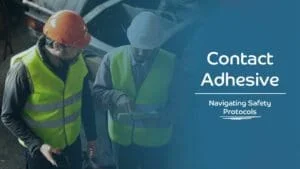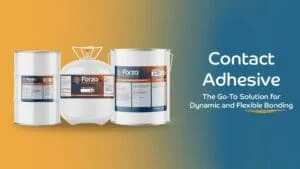What are the best structural adhesives for marine applications? And why use structural adhesives over other types of adhesives?
Marine structural adhesives can be used to bond substrates in many applications in the marine industry. Among other substrates, these adhesives bond metal, wood, fiberglass and aluminum, to itself or to each other. They can be used to bond hulls, decks, stiffeners and basically anything above or below the waterline that needs structural integrity.
Marine structural adhesives form tough, high strength, impact-resistant bonds. Although bonds aren’t necessarily immediate and may need some fixturing time, using structural adhesives will provide stronger bond integrity, by spreading the bond over a larger area, thus distributing the load more evenly. They are often used in place of mechanical fasteners, as mechanical fasteners can leave penetrations which can cause leaks in the finished part. Structural adhesives create little heat and won’t damage gelcoat, drastically reducing the need for rework on final parts.
Marine Structural Adhesives
So what types of structural adhesives can be used for marine applications? Single-part structural MS adhesives, and 2-part epoxy, urethane and methacrylate structural adhesives.
Single-part structural adhesives are perfect for bonding hulls together, for bonding decking or stiffeners, and for bonding fiberglass when fasteners are also used. They provide a permanent structural bond to a large variety of substrates including metals, polystyrene foam board, aluminum, brass, painted steel, glass, granite, wood, fiberglass, rubber and plastics, without the need of prep primer. They are similar to the bonding putty widely used in the industry, but with a lot higher tensile strength.
The high green strength of single-part structural adhesives holds parts until cured, and the strong bonds are maintained through impact, peel, flex and changes in temperature. They remain permanently flexible and durable, do not form bubbles, shrink or crack, and are highly resistant to water, salt water, oil, grease, fuel and mile chemicals. Single-part structural adhesives contain no solvents, water, odor or isocyanates, and are paintable even when wet.
2-part epoxy and methacrylate structural adhesives easily bond dissimilar materials, and are used for structural bonding of metals, rubber materials, thermoplastics, thermosets and composites, in applications where a flexible bond line is desired. With their 1:1 ratio, they are easy to mix and dispense. These adhesives provide excellent bond strength, outperforming other “brittle” 2-part adhesives. Minimal surface preparation is required, and once cured, these 2-part structural adhesives are impact, weather, UV and liquid resistant.
They resist most common industrial cleaners, fuels and lubricants, specifically salt water, salt fog, kerosene, gasoline, diesel fuel, antifreeze, hydraulic fluids, cutting oils and other liquids they will encounter in the open ocean. Epoxies have similar strength to methacrylates, but are more flexible, meaning they can handle higher impact and fluctuation within parts. These 2-part structural adhesives create no heat or exotherm, and are 100% solids, so will result in no shrinkage or cracking. They contain no solvents, isocyanates or VOCs. 2-part epoxy and methacrylate structural adhesives eliminate defects and witness marks on gel coat, drastically reducing rework and extra costs, all while improving the structural integrity of the finished parts.
Eager to get started using structural adhesives in your marine applications? Contact us, and let us know your application and the substrates you’re bonding, and we’ll happily provide our structural adhesive recommendations!




